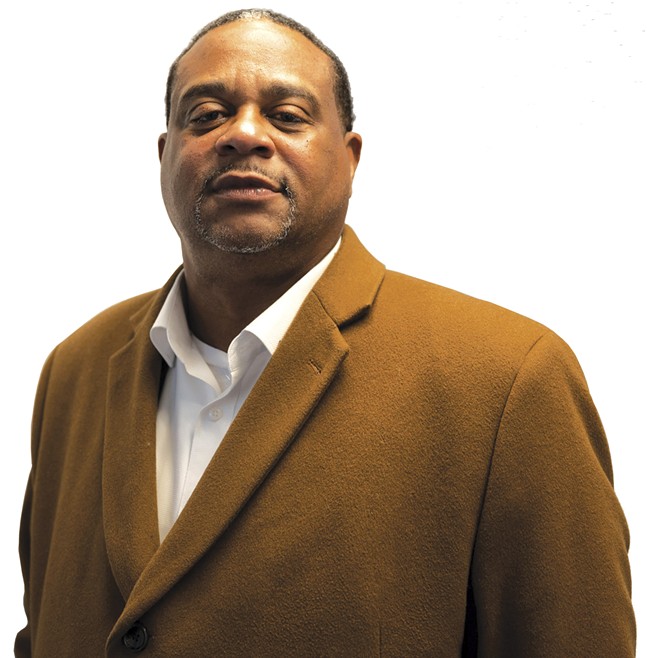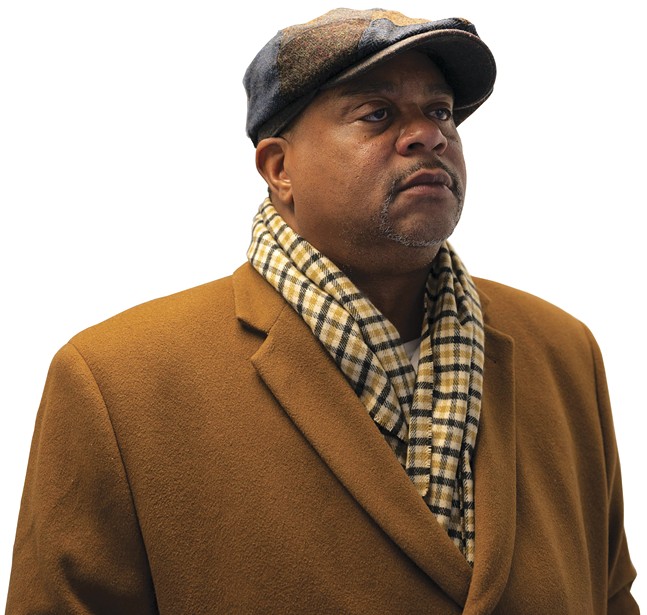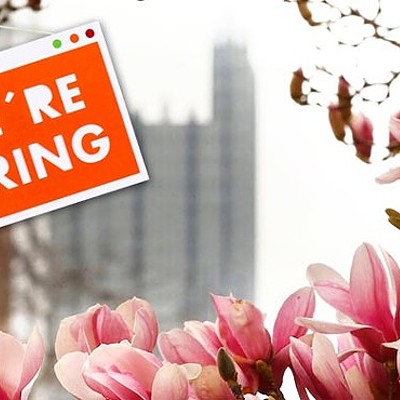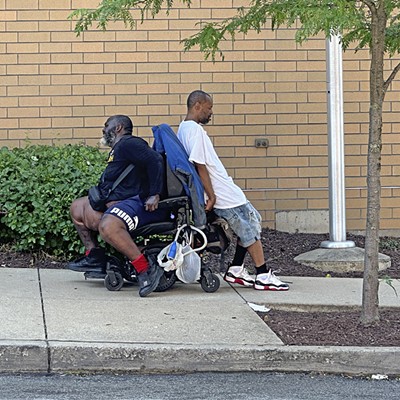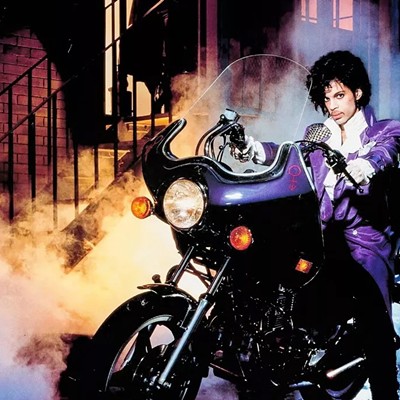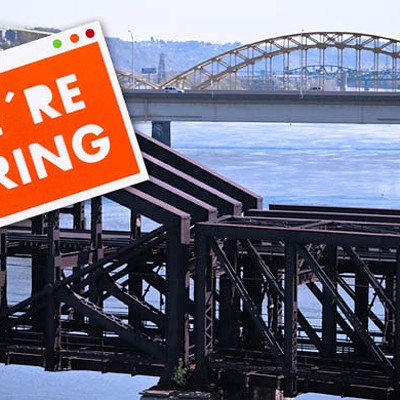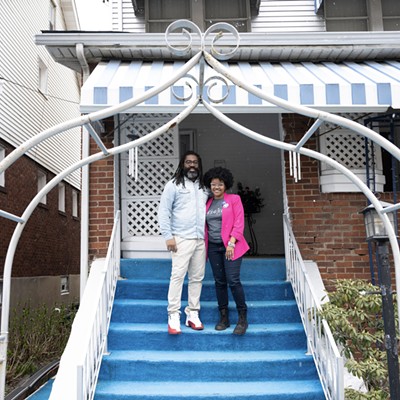Mayor Ed Gainey has a host of policy goals and ambitions for the remainder of his first term, but underpinning many of them is a simple message: "Diversity is good."
Among other agenda items — including his zealous pursuit of the 2026 NFL Draft — Gainey has spent much of his first term so far working to restore city employees' morale, taking a multi-pronged approach to combating violence, and assembling a diverse staff. The mayor is aware of and working on the city's lower-hanging fruit in terms of crime and homelessness, but he said the key to longer-term stability is the city's ability to attract and retain talented residents of all stripes.
"We've brought in different communities that have never had a pathway to the mayor's office," Gainey told Pittsburgh City Paper during a recent visit to its office on Dec. 5. As part of an effort to build relationships with local media, he and his communications team have been visiting various outlets to speak with editorial boards and answer questions. (A notable exception is the Pittsburgh Post-Gazette, which Gainey refuses to engage with while Newspaper Guild of Pittsburgh members remain on strike. City Paper and the Post-Gazette are both owned by Block Communications, Inc. but are not otherwise affiliated.)
Gainey's recent media junket stands to benefit the mayor by giving him and his staff the opportunity to tout successes. Though Gainey and his team spent the first 10 minutes of the meeting celebrating recent hires and the city's overhaul of its 311 services, CP had most of an hour to ask him probing questions about Downtown, policing, pedestrian safety, his recently proposed budget, and the future of the city as a hub for tech and film. Gainey and his team answered these questions in detail.
Setting precedents
Gainey has built his administration on the ideal of community. His recent budget, for example, "reflects extensive in-person engagement from across the City of Pittsburgh, as well as input derived from resident responses to surveys." However, this budget also signals the end of the American Rescue Plan Act windfall that made possible a massive investment in infrastructure, meaning Gainey has much narrower margins heading into the second half of his term.
As Pittsburgh's first Black mayor, Gainey is cognizant of the precedents he's setting and has built a staff that more closely reflects the city's demographics. "This is the most diverse administration this city has ever seen," he told CP. His office now includes Jake Wheatley, the city's first Black chief of staff; Maria Montaño, the city's first trans communications director; and others who bring Caribbean heritage, Hispanic culture, and disability inclusion to the City-County Building. This year, Gainey also appointed Larry Scirotto, the city's first gay police chief, and Amera Gilchrist, the city's first Black woman to be Chief of Emergency Medical Services.
The mayor said he's sharply focused on "break[ing] down segregation and silos." Among changes his administration hopes to implement is a stronger connection between the Hill District and Oakland, bridging the divide between Bakery Square and Larimer Ave., and exploring broader implementation of inclusionary zoning.
Gainey said he hopes for a city where people can't say, "I can tell who you are by your ZIP code."
The city is preparing for a comprehensive planning process that will engage residents in all 90 neighborhoods. This long-term plan would be the first in the city's history. "Our comprehensive plan will focus on sustainability and renewal with a dedication to ensuring that the Pittsburgh of 25 years from now is one where everyone who calls Pittsburgh home can thrive," Gainey said in a press release. The city announced last week that the Department of City Planning was moving forward with legislation to conduct the process with "two African American women-led firms."
Last week, the city also released its community strategic plan for digital equity, which envisions improved access to broadband and computers, and more equitable skills training for local residents.
"We're centering those communities that have been left behind for too long," Montaño told CP. She said the city has kept lines of communication with nonprofits including 1Hood to better understand locals' needs and wants, particularly when it comes to economic access and public safety.
Reviving and 'reimagining' Downtown
Downtown has drawn attention in recent years for its visible presence of unhoused people and drug users as well as scattered safety incidents, including a recent shooting at the Greyhound Station on Liberty Ave.
"Violent situations were on the uptick when I was coming in," Gainey told CP. "Homicides have to come down for a safe, welcoming, thriving city … That has a direct impact on the economy."
Still, Gainey said some narratives from sources, including the Post-Gazette and KDKA Radio's Marty Griffin, paint a bleak picture that isn't grounded in facts. He also acknowledged the city's limited role in stemming the growing homeless population (the county manages the city's public shelters). The mayor lamented the way some of those suffering in the open in Downtown were being used by media outlets to push a story of decline.
"I'm from a community that's been exploited our whole existence," he told CP. "We're not in the business of exploiting those individuals."
Although homelessness remains a difficult problem to solve, the mayor said Pittsburgh has done much to stem the rise in violent crime in Downtown and elsewhere. One indicator, he said, was the sharp decline in murders. "At the end of year, you're gonna see a reduction in homicides in the city," he told CP. "We're leading compared to cities of our size."
Gainey said Downtown is critical to Pittsburgh's overall image and revenue potential because it's central to the city's tourist attractions. His administration has worked closely with the Pittsburgh Downtown Partnership to boost tourists' sense of security, including on a $1 million public-facing ambassadors program that has added to existing services such as the PDP Clean Team. Other projects geared toward making Downtown more hospitable is the "reimagining" of Market Square and Mellon Square to be more "entertaining."
"We have to be able to entertain 365 days a year, and what we're setting up ensures that we can do that," Gainey told CP. He said his staff visited Cincinnati and Buffalo "to see how they're doing it in those cities." Gainey said his administration would share further plans for Downtown soon.
Gainey, Montaño, and press secretary Olga George all said it's clear the Golden Triangle has changed since the onset of COVID. Gainey acknowledged the neighborhood has changed — "This is not yesterday's Downtown! Downtown is growing and thriving. You can look at the restaurants, coffee sales, how many people are going to shows," he told CP, highlighting that some 21 new businesses have opened this year.
"Residential is hot Downtown," Montaño added, noting that the numbers bear this out. She said Pittsburgh was in a "unique position" at the beginning of the pandemic due to its heavy focus on corporate real estate but has pivoted effectively to condominiums. Residential growth in places like Downtown and the Strip District could play a key role offsetting population decline in other parts of the city in the years ahead.
Preparing for the future
The size issue for Pittsburgh is an important one. The city currently has just over 300,000 residents, and Gainey said his administration is focused on doing what they can to stem further population loss, secure the city against the effects of climate change, and entice people with Pittsburgh roots to move back from other states. Part of this bid is Gainey's jump-starting of the Pittsburgh Land Bank, which buys up and repurposes blighted property.
"So many people left because they couldn't find greener pastures because of the segregation that existed for so long," Gainey said.
Other efforts include improvements to public services. Gainey said his team had invested in snow plows, consolidated the city's 311 services, and solicited input from police officers in all zones while working toward a new contract. Gainey said police "wanted a disciplinary matrix" to hold other officers accountable and boost morale. That matrix was part of a new contract that police officers overwhelmingly approved in March, which Gainey said is a far cry from "defunding the police."
Notably, Gainey would not share further details on potential plans for a law enforcement complex in his home neighborhood of Lincoln-Lemington-Belmar. Press secretary George said Scirotto and Gainey had no interest in engendering "a repeat of Atlanta['s Cop City]" and were instead "focused on making sure officers can connect and communicate with residents" as they did while recently averting violence in local schools.
Gainey said his administration is investing in youth by launching the Youth Civic Leadership Academy, working to curb violence, and seeking a better relationship with Pittsburgh Public Schools. This goes hand in hand with the city's efforts to refashion itself as a hub of "meds and eds" and a forward-thinking tech city, which Gainey says are key to youth staying after they finish school or college.
"The reality is we don't have a problem with recruiting; we have a problem with retainment," he told CP. "When young people don't see values and culture in the city, they're less likely to stay."
Montaño says that prominent misfires like Uber's brief tenure don't mean Pittsburgh can't be a lasting tech hub. "In terms of tech stuff, we're seeing a shift away from tech like autonomous vehicles and more toward, quite frankly, practical things like space and aeronautics," she said, highlighting Astrobotic's development of lunar technology.
On a much more practical level, George said this "city of mountains" is working to literally shore itself up against the high potential for landslides, which has increased with heavier rain. "FEMA and PEMA are recognizing the work we're doing here to mitigate climate change," she told CP.
It's infrastructure projects like these, alongside pedestrian safety initiatives such as traffic calming, and improvements to the city's parks, that are probably the most tangible sign of Gainey's work over this first term. As he looks toward the end of it in 2025, Gainey is also looking back to projects like the quick reconstruction of the Fern Hollow Bridge as an indicator of what he's accomplished so far and what's possible for the city. Even with the end of federal COVID relief funding — Gainey quipped that the city has "gotta get skinny for next two years" and isn't planning any new capital projects — the mayor says his focus is squarely on making Pittsburgh a place where all residents have an opportunity to thrive regardless of what the future holds.
"I don't believe in catering to anybody, but in serving," Gainey said.
Correction: An earlier version of this article stated that Gainey would soon appear with the Allegheny Conference at a presser. No such press conference is currently scheduled; however, the city is currently working with the Allegheny Conference on a Downtown benchmarking tool called IndexPGH.
